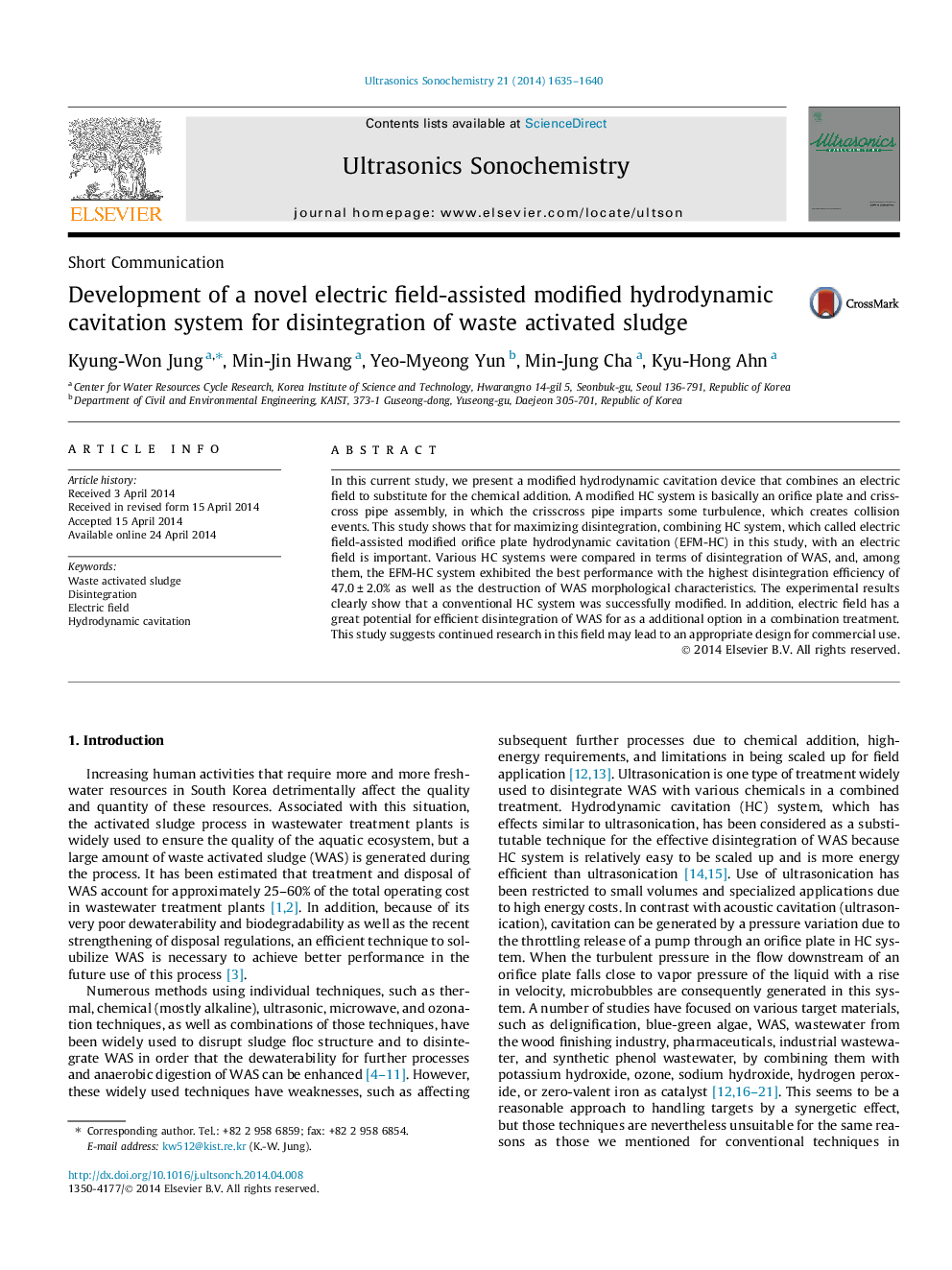| کد مقاله | کد نشریه | سال انتشار | مقاله انگلیسی | نسخه تمام متن |
|---|---|---|---|---|
| 1266086 | 972261 | 2014 | 6 صفحه PDF | دانلود رایگان |
• A novel electric field-assisted hydrodynamic cavitation system was developed.
• Synergetic effect was observed in electric field-assisted HC system.
• Electric field has a great potential for substitution of chemical addition.
• The highest disintegration degree of 47.0 ± 2.0% was recorded in EFM-HC system.
In this current study, we present a modified hydrodynamic cavitation device that combines an electric field to substitute for the chemical addition. A modified HC system is basically an orifice plate and crisscross pipe assembly, in which the crisscross pipe imparts some turbulence, which creates collision events. This study shows that for maximizing disintegration, combining HC system, which called electric field-assisted modified orifice plate hydrodynamic cavitation (EFM-HC) in this study, with an electric field is important. Various HC systems were compared in terms of disintegration of WAS, and, among them, the EFM-HC system exhibited the best performance with the highest disintegration efficiency of 47.0 ± 2.0% as well as the destruction of WAS morphological characteristics. The experimental results clearly show that a conventional HC system was successfully modified. In addition, electric field has a great potential for efficient disintegration of WAS for as a additional option in a combination treatment. This study suggests continued research in this field may lead to an appropriate design for commercial use.
Journal: Ultrasonics Sonochemistry - Volume 21, Issue 5, September 2014, Pages 1635–1640
